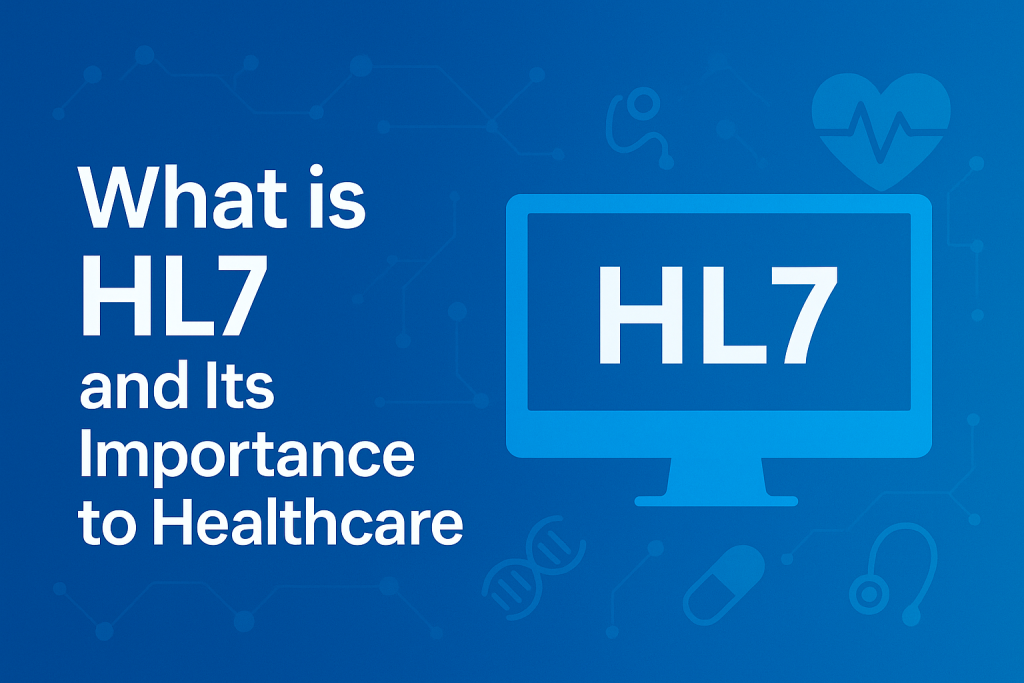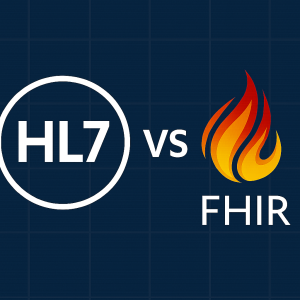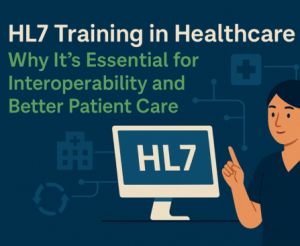
In today’s fast-paced, digital healthcare environment, seamless data exchange isn’t just a luxury — it’s a necessity. Yet, despite massive investments in electronic health records (EHRs) and health IT infrastructure, interoperability remains a persistent challenge. That’s where HL7 — Health Level Seven — steps in as a pivotal standard.
But what exactly is HL7, and why is it so important to healthcare organizations around the world? This guide will break it all down.
What is HL7?
HL7 (Health Level Seven) refers to a set of international standards for the exchange, integration, sharing, and retrieval of electronic health information. These standards are developed by Health Level Seven International, a not-for-profit organization dedicated to providing a comprehensive framework for the exchange of clinical data.
Key Facts About HL7
- HL7 is used in over 55 countries globally.
- It primarily supports communication between health information systems, such as EHRs, laboratory systems, billing systems, and radiology systems.
- HL7 standards include several versions, the most widely used being HL7 v2.x, HL7 v3, and HL7 FHIR (Fast Healthcare Interoperability Resources).
Why HL7 Matters in Healthcare
1. Solves the Interoperability Puzzle
One of the major problems in modern healthcare is the inability of disparate systems to “talk” to each other. HL7 solves this by providing a common language and structure for data exchange.
2. Enhances Patient Care
When clinicians have accurate, real-time information from different sources, they can make better decisions. HL7 helps integrate data like lab results, prescriptions, and imaging into one view.
3. Improves Operational Efficiency
Manual data entry and reconciliation are error-prone and time-consuming. HL7 automates data exchange, saving time, reducing costs, and minimizing human error.
4. Ensures Compliance with Regulations
HL7 standards support HIPAA, Meaningful Use, and other regulatory frameworks that demand secure and interoperable systems.
A Closer Look at HL7 Standards
HL7 v2.x: The Workhorse of Healthcare Data Exchange
Introduced in the late 1980s, HL7 v2.x remains one of the most widely implemented healthcare messaging standards.
Use Cases:
- Admission/discharge/transfer (ADT) messages
- Lab results (ORU messages)
- Medical billing
Advantages:
- Lightweight and flexible
- Supported by most EHRs
- Easily customizable
Limitations:
- Loose specification can lead to implementation variation
HL7 v3: A More Structured Approach
HL7 v3 was an ambitious attempt to create a more consistent, formally structured standard based on a Reference Information Model (RIM).
Use Cases:
- Public health reporting
- Document sharing
Challenges:
- Complexity and steep learning curve
- Limited adoption compared to HL7 v2
HL7 FHIR: The Future of Health Data Exchange
HL7 FHIR (Fast Healthcare Interoperability Resources) is the latest standard and addresses the shortcomings of its predecessors by using modern web technologies like RESTful APIs and JSON.
Key Benefits:
- API-driven
- Mobile and cloud-friendly
- Easier implementation
- Excellent documentation
Use Cases:
- Mobile health apps
- Patient portals
- Health information exchanges (HIEs)
Real-World Case Studies: HL7 in Action
Case Study 1: Cleveland Clinic’s Integration of EHR and Lab Systems Using HL7 v2
Challenge:
The Cleveland Clinic needed to connect their EHR with multiple lab systems without disrupting clinical workflows.
Solution:
Using HL7 v2.x ADT and ORU messages, they integrated systems to ensure automatic data exchange.
Outcome:
- Reduced lab turnaround time by 30%
- Improved diagnostic accuracy
- Minimized manual data entry
Case Study 2: Apple’s Use of HL7 FHIR in Health Records App
Challenge:
Consumers wanted access to their medical records across multiple providers.
Solution:
Apple integrated HL7 FHIR APIs in its Health app to enable patients to download their records securely.
Outcome:
- 100+ healthcare institutions now offer FHIR integration with the Apple Health app
- Empowered patients with on-demand access to their data
Case Study 3: Kaiser Permanente and HL7 v3 for Public Health Reporting
Challenge:
Kaiser Permanente needed to report public health data to government agencies in a standardized format.
Solution:
They implemented HL7 v3 messaging for syndromic surveillance and immunization tracking.
Outcome:
- Ensured compliance with CDC mandates
- Enabled real-time public health monitoring
Key Components of HL7 Messaging
Understanding HL7 messaging is crucial for any healthcare IT project. Here’s what goes into an HL7 message:
Message Structure
An HL7 message is composed of segments, each representing a different piece of information.
Example (HL7 v2 ADT Message):
lessCopyEditMSH|^~\&|SendingApp|SendingFac|ReceivingApp|ReceivingFac|20250706||ADT^A01|123456|P|2.3
PID|1||123456^^^HospitalMRN||DOE^JOHN||19800101|M
Core Segments
- MSH (Message Header): Identifies the sender, receiver, and message type
- PID (Patient Identification): Contains demographic data
- OBR/OBX (Observation Request/Result): For lab and diagnostic results
How to Implement HL7 in Your Organization
Adopting HL7 standards can be complex, but following a structured approach will streamline the process.
Key Steps for HL7 Implementation
- Assess Your Existing Infrastructure
- Inventory current EHR, LIS, RIS, billing, and other systems
- Choose the Right HL7 Standard
- Use HL7 v2 for traditional messaging
- Adopt FHIR for modern web-based applications
- Partner with HL7 Integration Vendors
- Consider tools like Mirth Connect, Rhapsody, or InterSystems Ensemble
- Develop Interface Specifications
- Define data formats, triggers, and message types for each system
- Perform Testing and Validation
- Use HL7 message simulators and validators
- Train Staff and Stakeholders
- Educate clinical and IT teams on workflows and message troubleshooting
- Ensure Compliance and Security
- Implement HIPAA-compliant data encryption and access controls
HL7 vs Other Standards: What Sets It Apart?
| Feature | HL7 | CDA | DICOM | X12 |
|---|---|---|---|---|
| Focus | Clinical data exchange | Document architecture | Imaging data | Billing and claims |
| Format | Message-based (v2, v3), API (FHIR) | XML documents | Binary | ANSI |
| Common Use | EHR integration | Discharge summaries | Radiology | Insurance claims |
| Popularity | High | Moderate | High in radiology | High in billing |
Conclusion: HL7 offers the broadest scope and adaptability for most clinical data exchange needs.
Also Read: What Is The Real Difference Between HL7 And FHIR?
Common Challenges in HL7 Implementation
Even with clear benefits, HL7 integration projects often hit roadblocks.
Top Challenges:
- Variability in Implementations
HL7 v2 allows optional fields, leading to inconsistent usage. - Data Mapping Complexity
Aligning fields between systems can be labor-intensive. - Version Compatibility
Legacy systems may not support newer HL7 versions or FHIR. - Resource Constraints
Lack of trained HL7 developers and interface analysts
Tips to Overcome These:
- Adopt interface engines to handle message transformation
- Use standard implementation guides (IGs)
- Conduct extensive user acceptance testing (UAT)
The Future of HL7: Where Are We Headed?
Key Trends:
- Widespread FHIR Adoption
Driven by the ONC’s Cures Act Final Rule mandating API-based access. - Increased Use in Mobile Health (mHealth)
FHIR enables lightweight applications for smartphones and wearables. - AI and Analytics Integration
Structured HL7 data can feed into machine learning algorithms. - Global Standardization Efforts
WHO and global ministries of health are adopting HL7 FHIR for interoperability frameworks.
Conclusion: Why HL7 is a Strategic Asset for Healthcare IT
HL7 is more than just a technical protocol — it’s a strategic enabler of data-driven, patient-centered care. From reducing errors to improving outcomes, HL7 provides the backbone for seamless communication across healthcare systems.
For IT decision-makers and project managers, understanding and implementing HL7 isn’t optional—it’s a mission-critical task that ensures long-term operational success and regulatory compliance.
Ready to Integrate HL7 into Your Healthcare Ecosystem?
If you’re planning an HL7 implementation or need expert help integrating your systems using HL7 v2, v3, or FHIR, our team is here to assist.
👉 Contact us today for a free interoperability assessment and discover how HL7 can transform your data strategy.



